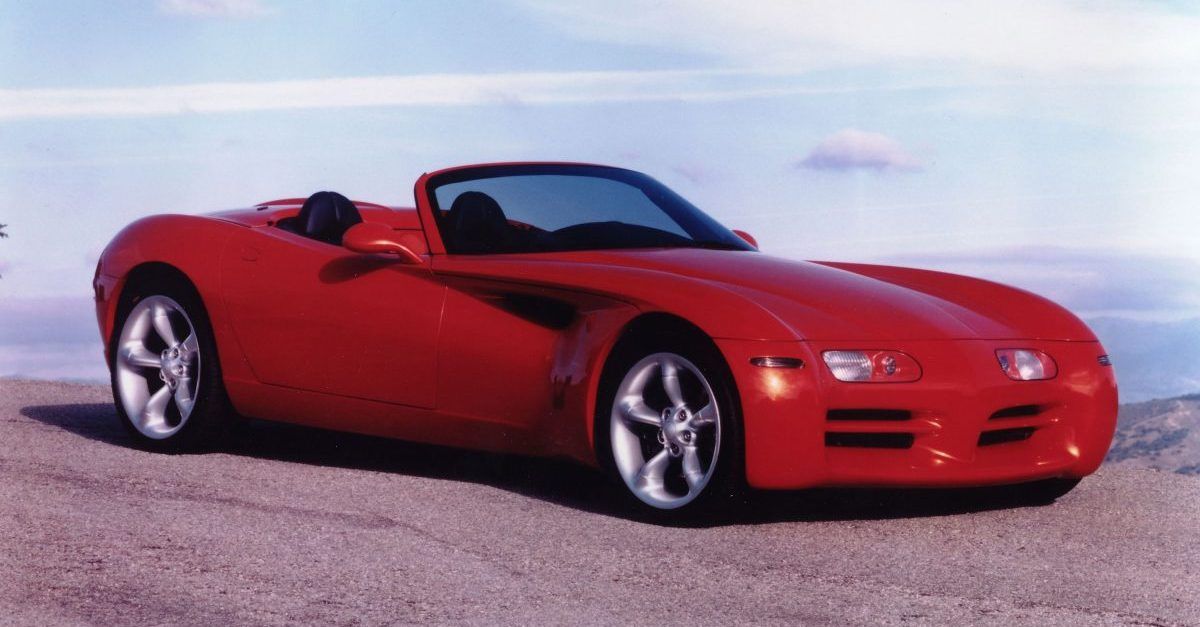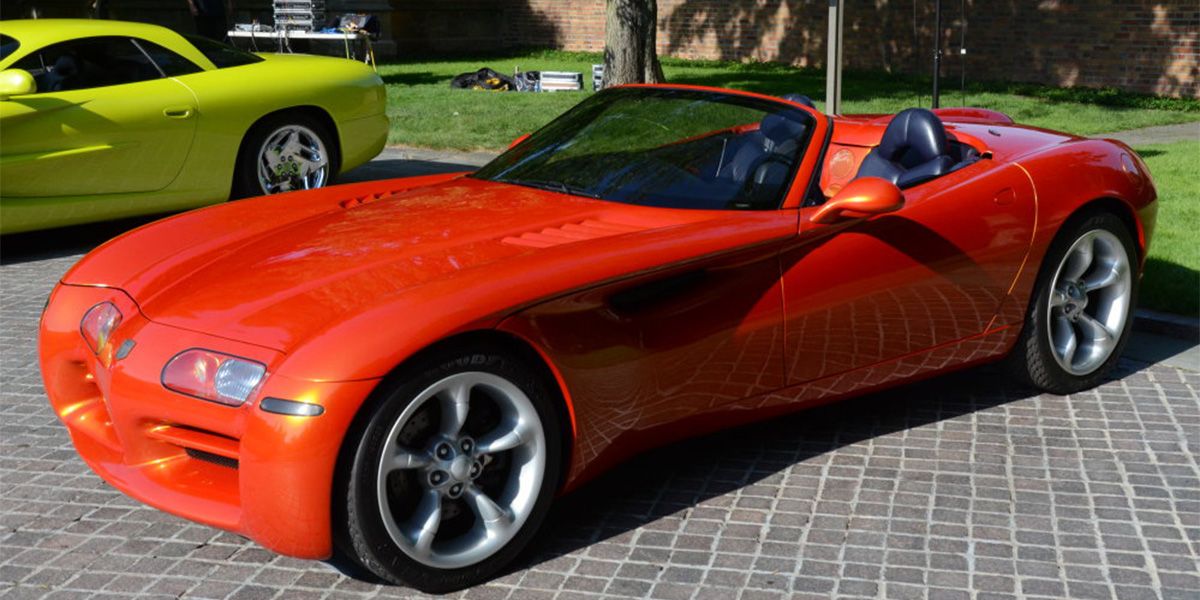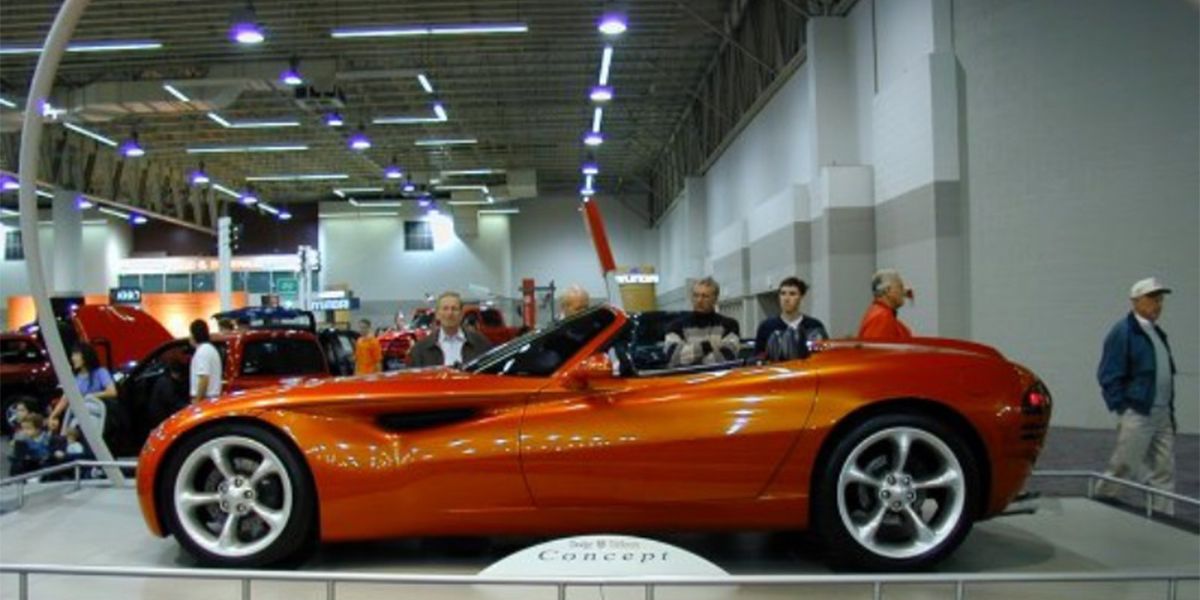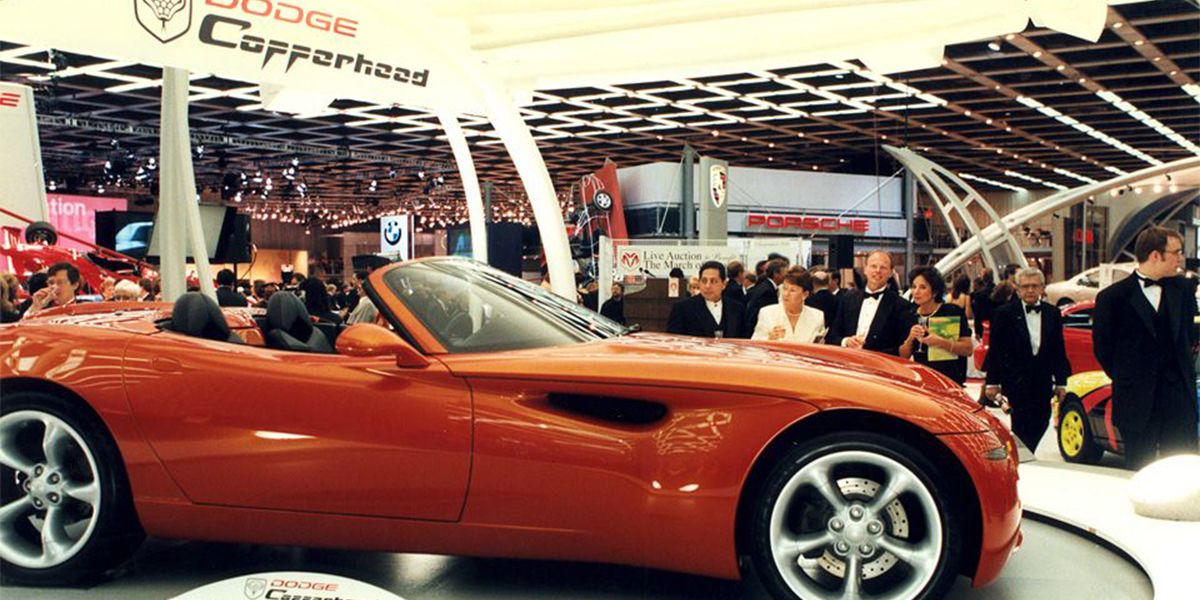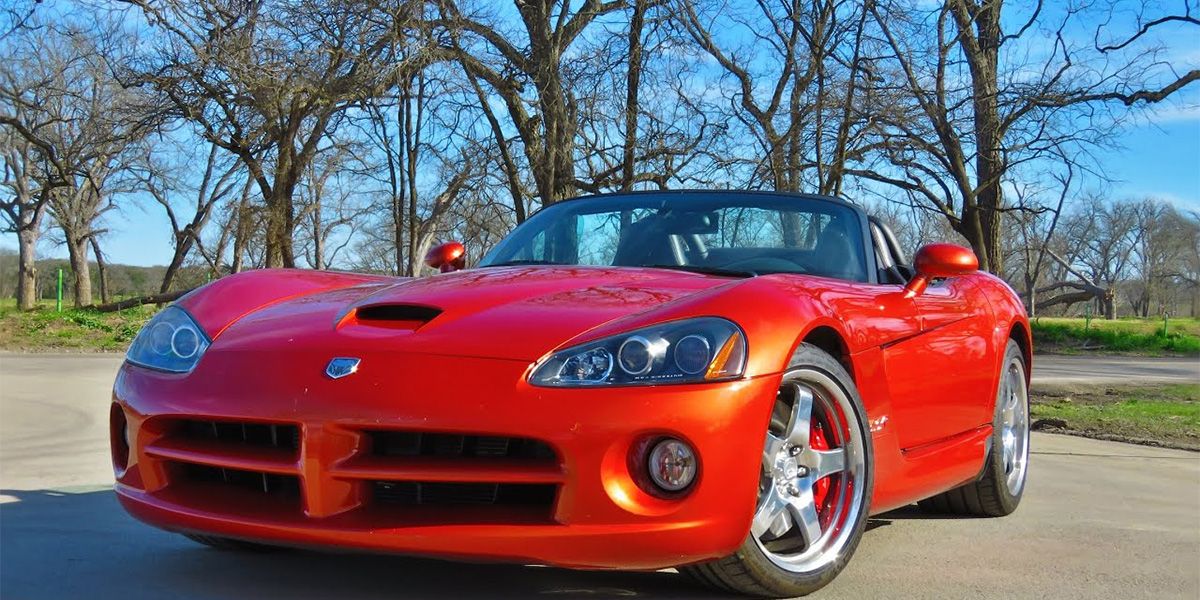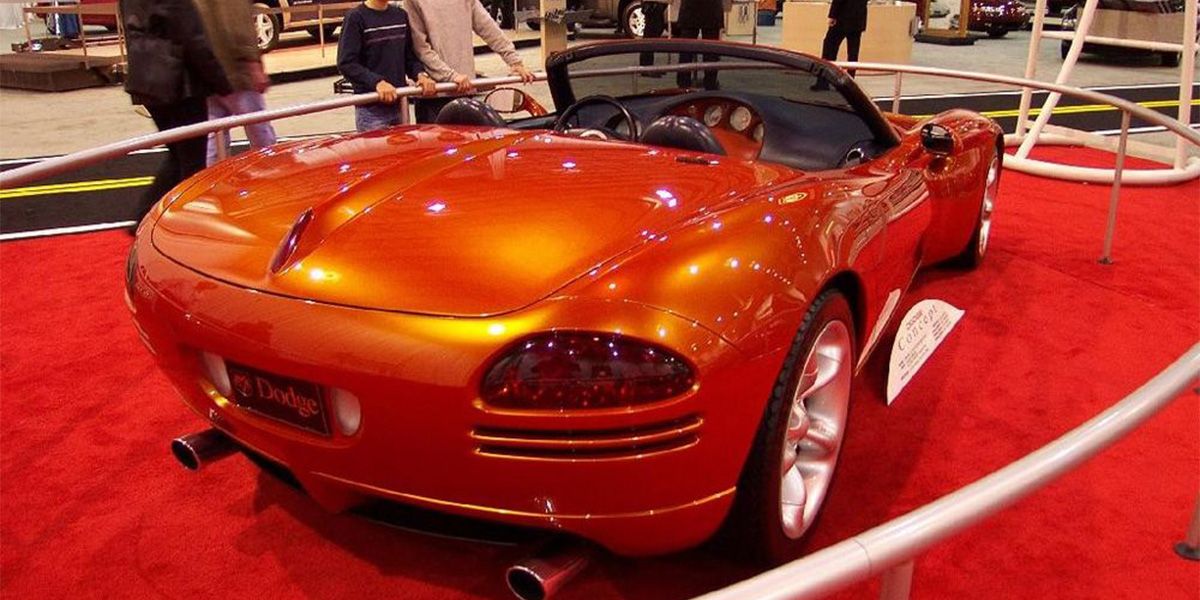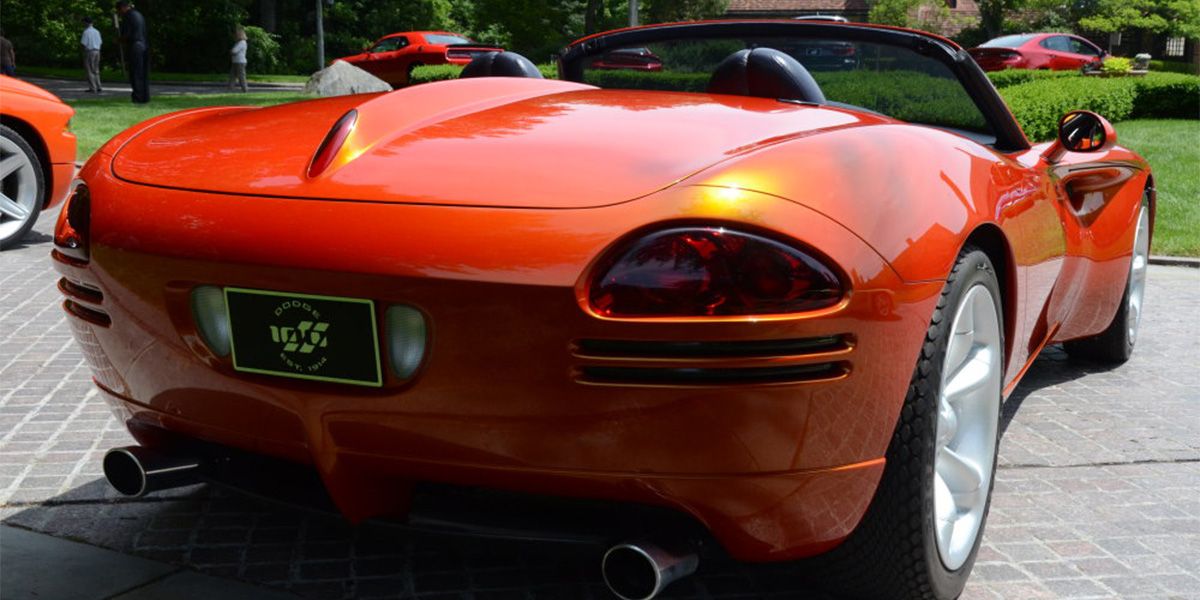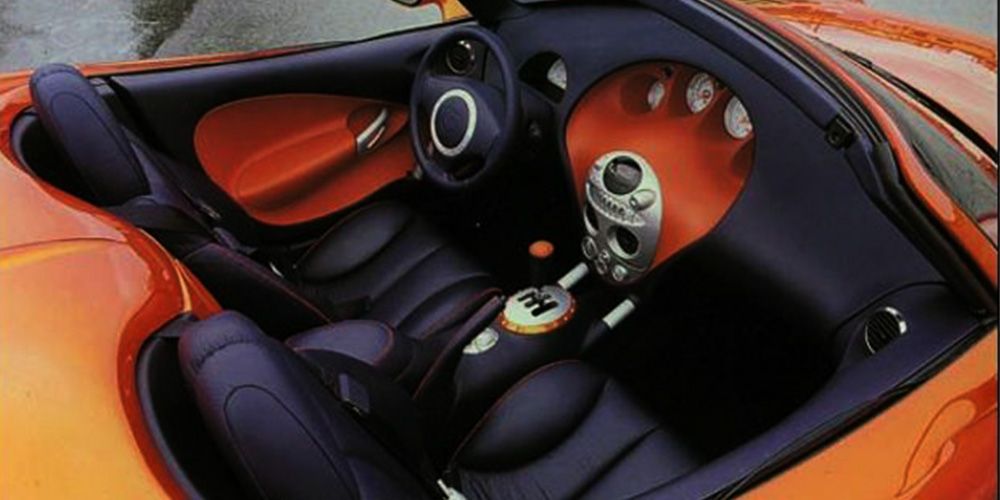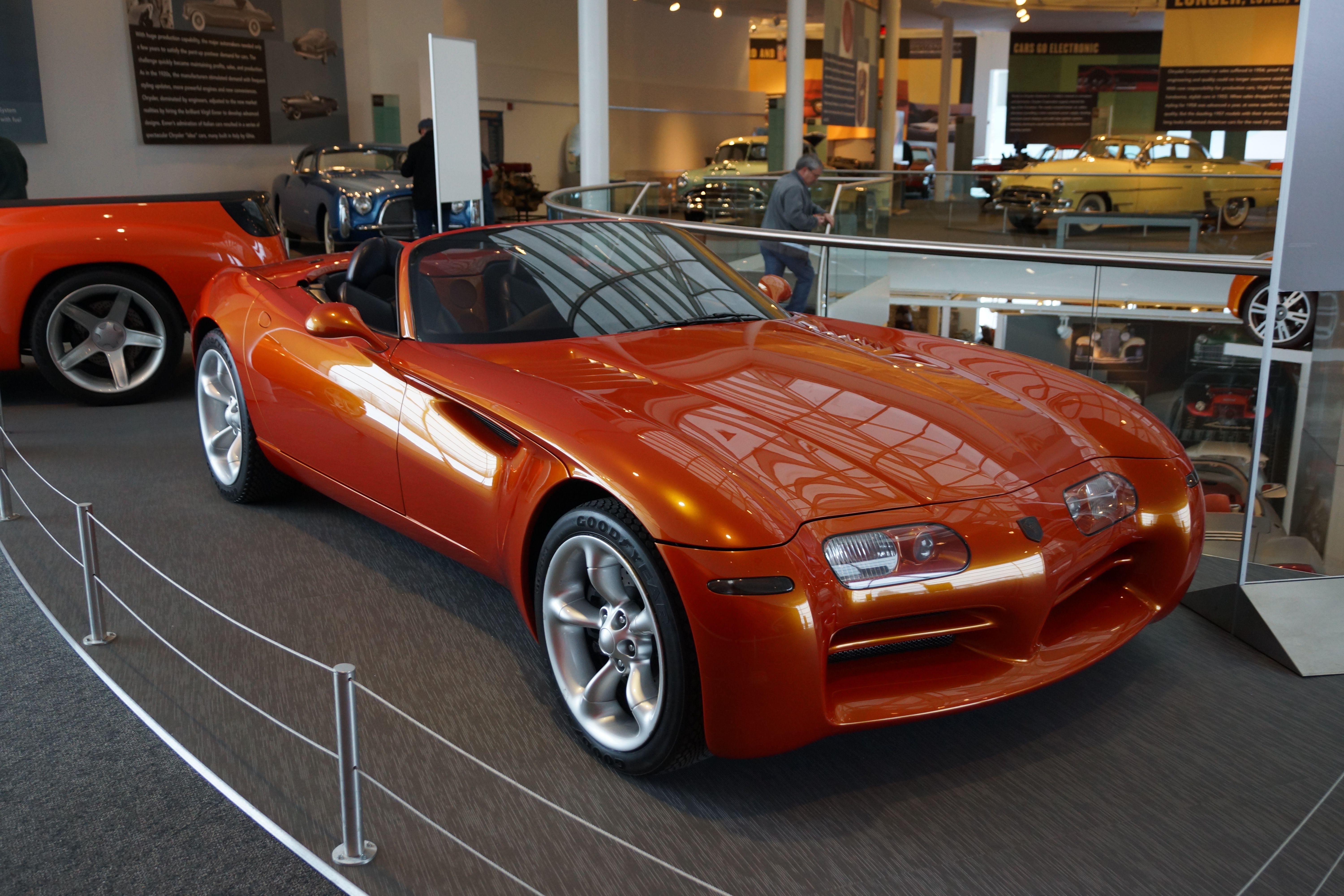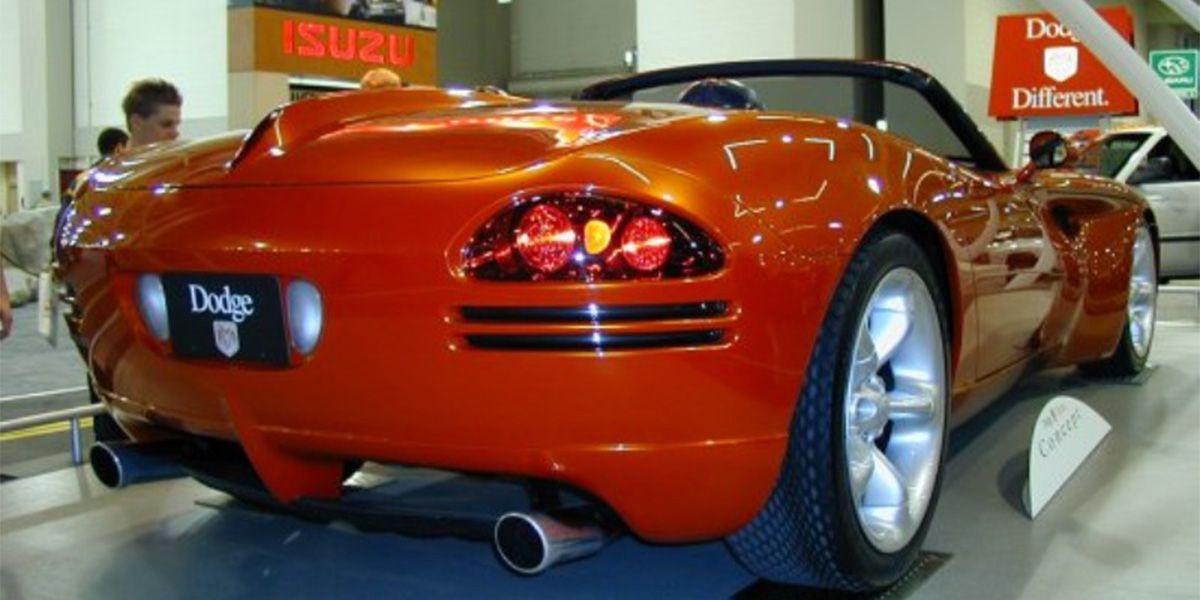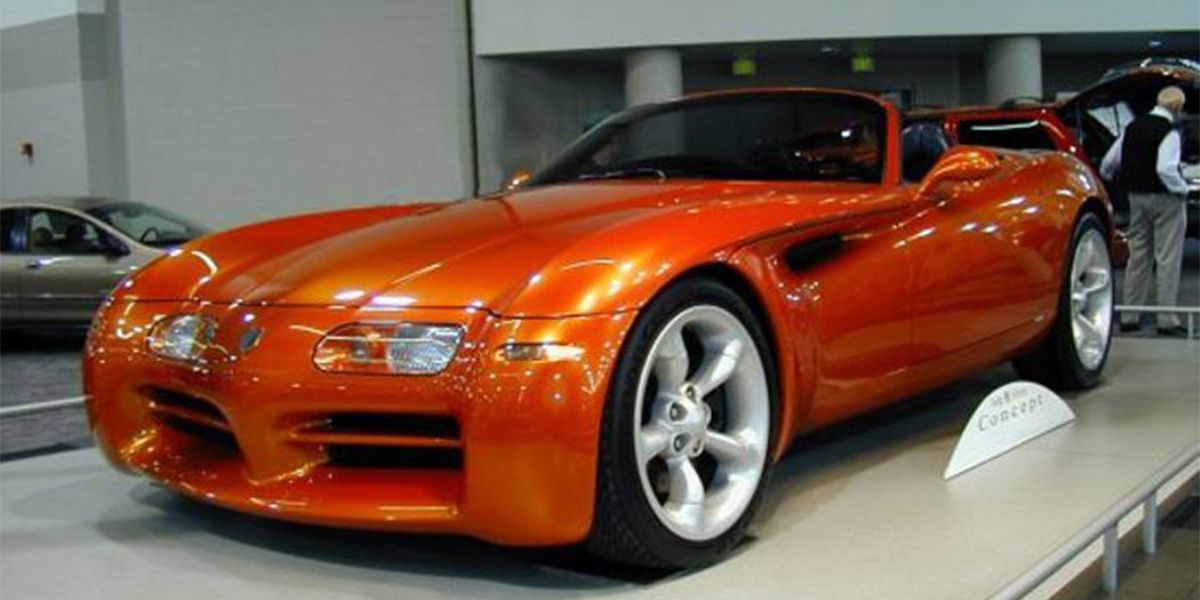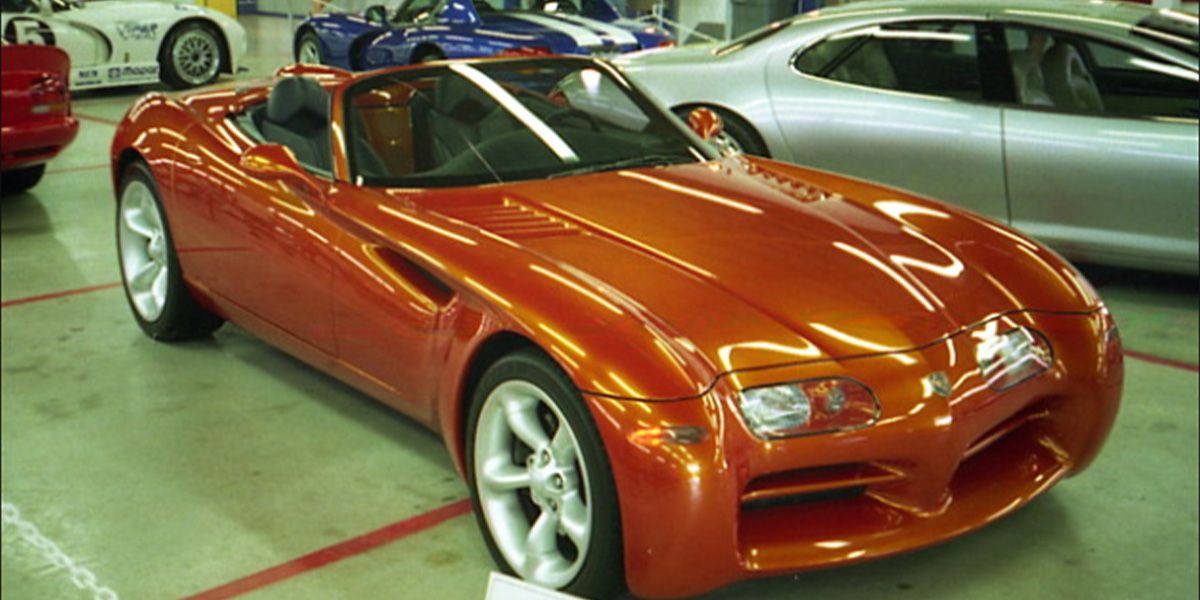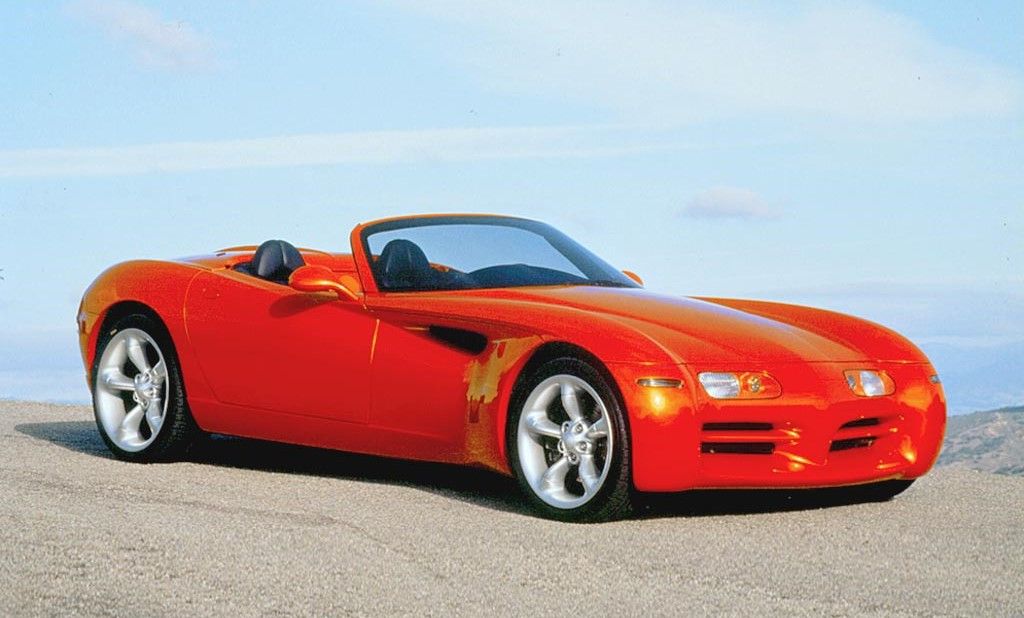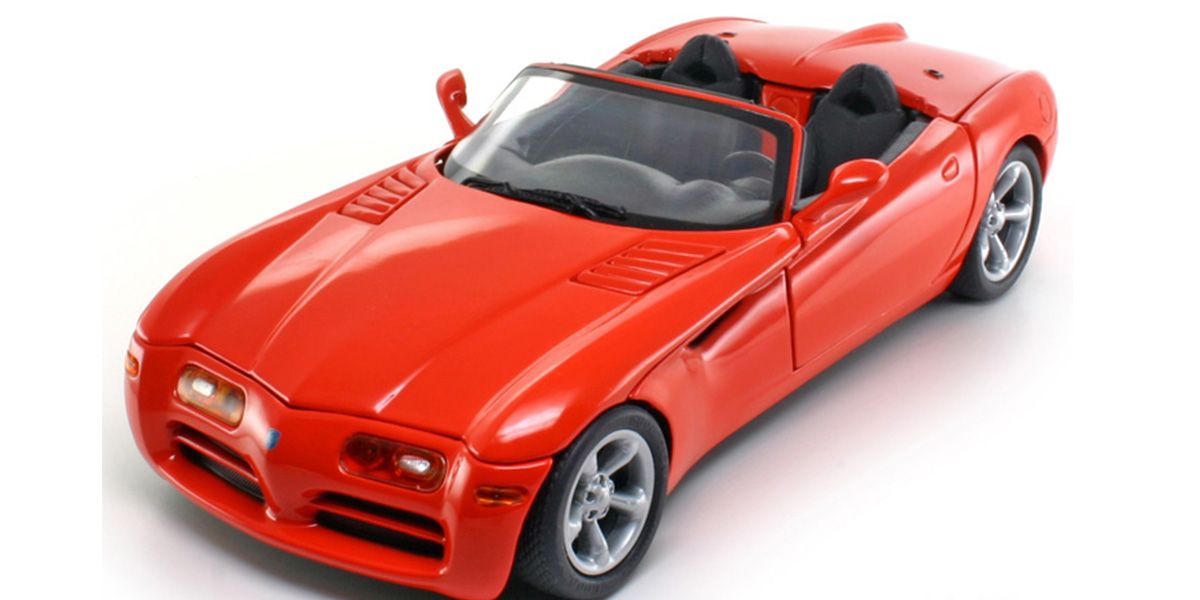The Dodge Copperhead was a convertible that was revealed back in April 1997 to great glory at the North American International Auto Show in Detroit. This Chrysler concept had some design attributes, such as a short rear deck and a long hood, partly influenced by the classic Austin-Healey 3000.
With its wheels pushed out to the corners, it would have had better handling than the Dodge Viper thanks to its low-lying center of mass height. Having narrowly missed out on this list of the memorable concept cars of the past 20 years, here are some interesting things most people don't remember about the Dodge Copperhead.
8 The Origin Of Its Name
Chrysler's inspiration for the Copperhead name came from two ideas. First, the car's copper fire orange color, which interestingly changed its orange shade when viewed from different angles. Secondly, as an alternative to the Dodge Viper, it was named after a venomous viper family snake endemic to Eastern North America called the Copperhead.
But some copyright problems arose from this name. Billy Gibbons of the ZZ Top band had registered his 1950 Ford hot-rod with the Copperhead name and had exclusive rights. To avoid legal action, Chrysler renamed it the Dodge Concept car.
7 A Concept Car
With the available Dodge Viper chassis, Chrysler decided to create an aggressive-looking car with better handling and attractive prices for attention. From there, they would make a decision on its production. Sadly, the Dodge Copperhead ended up only as a Chrysler Group concept car.
The '90s were when The Detroit Show pulled in large numbers and attention. It shouldn't come as a surprise Chrysler put lots of effort into making concept cars as striking as possible. Chrysler made careful adjustments relating to the Copperhead's size to differentiate it from the Dodge Viper. However, it remains part of the company's rare, unique vehicles that ever graced the '90s Detroit Car Show.
6 Cheaper Alternative To The Dodge Viper
Apart from being built to outdo the German cars such as the Mercedes SLK and BMW Z3, the Copperhead was also intended to be something like a mid-range Dodge Viper. A logical alternative since the Dodge Viper isn’t recommended for beginner drivers. The Copperhead was for people who didn't want to spend the $75,000 a Viper would set them back.
As a result, the Copperhead's sale price was $30,000, $45,000 less than of the Viper, and it was also way cheaper than the 2000 Porsche Boxster with its $41,430 price tag. With this price, most people were thrilled and looked forward to its official release.
5 Built To Be Fun At The Expense Of Extreme Performance
Since the Copperhead was designed to be a fun and easy-to-handle car, it lacked the essential quality that would have made it successful - raw power. Chrysler went for a modified 24-valve, all-aluminum, 2.7-liter V6 from a second-generation Dodge Intrepid; it could only churn out 220 horsepower and provide 188 lb-ft. of torque.
The engine was bolted to the 5-speed manual gearbox, donated by the Dodge Dakota to provide immediate traction power. All this power went to the rear wheels to help it achieve its maximum speed of only 135mph. For the 0-60mph sprint, it would take 6.8 seconds. These figures weren't that impressive.
4 Snake Resembling Interior Design
On the inside, the car interior resembled a Copperhead snake's head while still maintaining the look of a futuristic and classic car mashup. Its dashboard's brightly colored and neatly mounted circular center pod represented what Chrysler's engineers thought modern cars dashboards would look like. It had main controls for cassette/radio, HVAC, as well as temperature, oil, and fuel gauges. Behind the steering wheel, there was a large speedometer with a unique old-school design.
The center console accommodated both the windows/door lock controls and the gearshift lever. For comfortable sitting, the Copperhead had 2 well-contoured bucket seats overlaid with Amethyst faux snakeskin covers to complete the Copperhead snake theme.
3 Impressive Exterior Design
The Copperhead's exterior had a striking Copper Fire Orange color and well-crafted sweeping body lines for a sleek look. Its big wheels and elongated hood with dual air scoops also gave it the traditional look of a sports car when viewed from the side. For a more serpentine touch, while avoiding the Dodge Viper looks, the Copperhead was made with wider front wheel fenders, deeper and lower-positioned quad headlamps, an elongated air scoop grille, smaller Dodge Viper-style taillights, and a subtle rear decklid fin.
Since the engineers positioning its wheels (20×9 rear, 18×8 front) to the corners, it looked fast even though it's among cars that didn't impress much in the speed department. To finish off the Copperhead snake theme on the outside, Chrysler fitted the car with customized Goodyear tires with a snakeskin tread pattern.
2 Production?
There were a couple of reasons why Chrysler never launched the Copperhead into full-scale production in 2000 as slated. To begin with, the name controversy played a big role. Secondly, around 2000, the market was growing fond of SUVs. And since Chrysler's other sports cars like the Dodge Viper and Plymouth Prowler had excelled, the automaker decided to manufacture affordable SUVs to fill that market gap, leaving the Copperhead out in the cold.
Lastly, there was a Daimler – the then Mercedes' parent company - and Chrysler merger. This merger was based on cost-saving through cumulative sharing of platforms and ideas. From this perspective, it was clear that Copperhead production wouldn't be very economical because Daimer already had a similar two-seat roadster - the Mercedes-Benz SLK-Class.
1 Used As Toys And In Gaming
The renaming aftermath of this car led to the fabrication of models and scale toys named The Concept Car instead of Copperhead by famous toy carmakers such as Revell, Hot Wheels, AMT/ERTL, and Maisto.
Since this was among the dream cars for many at the time, items like calendars, press kits, and merchandise using the original Copperhead's name were more sought after - they became rare and more collectible. The Copperhead was also featured in video games like Gran Turismo and its subsequent installment, while still renamed the Concept Car.

